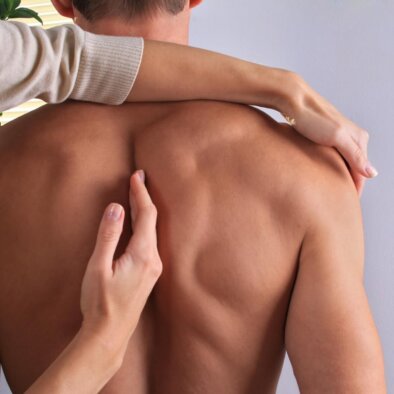
- About osteopathy
- Osteopathic approach
Osteopathic approach
The osteopathic approach to pain or injury involves assessment, manual therapy, exercise prescription, additional treatments, and patient education and advice.
This means they will discuss, examine, manage and rehabilitate injuries or conditions by checking the integrity and structure of the surrounding regions, soft tissues, muscles, joints, tendons and ligaments, as well as your overall health, wellbeing and lifestyle.
Where possible, osteopaths will aim to:
- Aid soft tissue repair or recovery
- Relieve pressure on impacted or impinged neural structures
- Strengthen the body and its tissues following injury, or pre- or post-surgery
- Manage acute and chronic pain
- Aid your body’s movement or physiological skills and capability in general or for specific purposes such as particular sports or daily activities
- Support your participation in activities of daily living, including

Osteopaths will first take a thorough case history to find out more about you to understand your needs, your pain or injury, and your lifestyle, to work out how osteopathy may be able to help you.
Your osteopath will assess you and your body as a whole to understand what is causing your pain and why by carrying out a physical examination.
Your osteopath will outline what is causing your pain and discuss your treatment and management options with you depending on your pain or injury, your needs, what is possible for you as an individual, and what is possible using osteopathy.
Once you happy to proceed, your osteopath will treat you using different osteopathic techniques, such as manual therapy, and provide you with additional information and resources to support you to manage your pain or injury.
What is manual therapy?
Osteopaths may use different ‘hands-on’ techniques – or manual therapy – that may provide relief from musculoskeletal pain and discomfort. Manual therapy and manipulation involves diagnosis and treatment carried out using the hands, by working on the soft tissues in the injured or painful area. This may be combined with mobilisation techniques, soft and deep tissue clinical massage, joint manipulation and stretching.
Exercise prescription
As part of your healthcare, exercise may help you to get you back doing the things you enjoy. Osteopaths can provide a clinical exercise program of activities and movement strategies you can do at home, at work or while you are out and about to help your recovery from injury and ease your pain.
